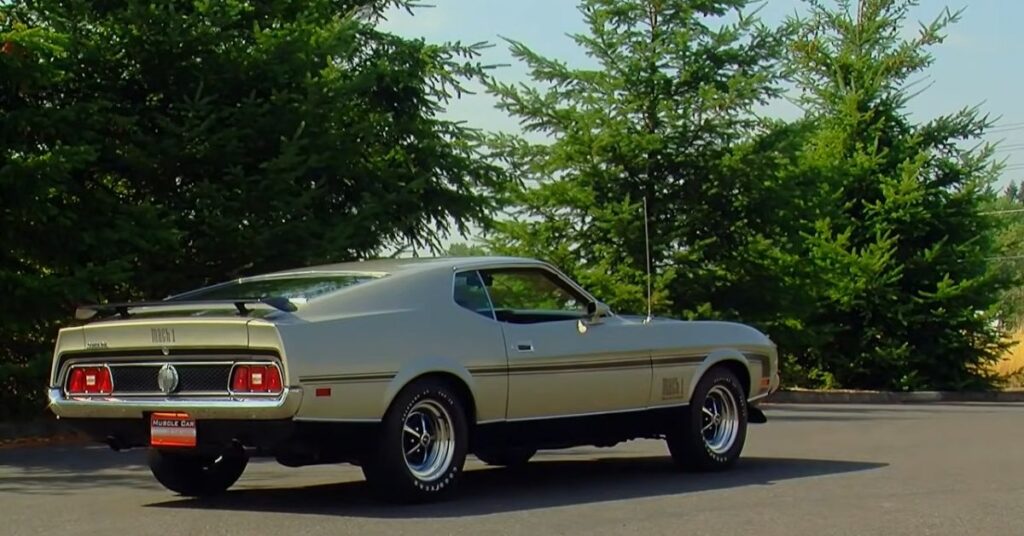The 1971 Ford Mustang Mach 1 429 is a legendary muscle car that left a lasting impression in the automotive world. In this episode of Muscle Car of the Week, we delve into the unique features and design choices that defined the 1971 Mustang Mach 1. From its larger size to its powerful engine, the 1971 Mustang aimed to captivate buyers and rekindle the success of its predecessors. Join us as we explore the iconic 1971 Ford Mustang Mach 1 and uncover the fascinating details that make it a true classic.
Redesigning the Icon
The 1971 Ford Mustang Mach 1 was a significant departure from its predecessors. Ford aimed to breathe new life into the Mustang brand, which had experienced declining sales. By introducing a redesigned model, they sought to reignite the passion and excitement that made the Mustang a cultural phenomenon.
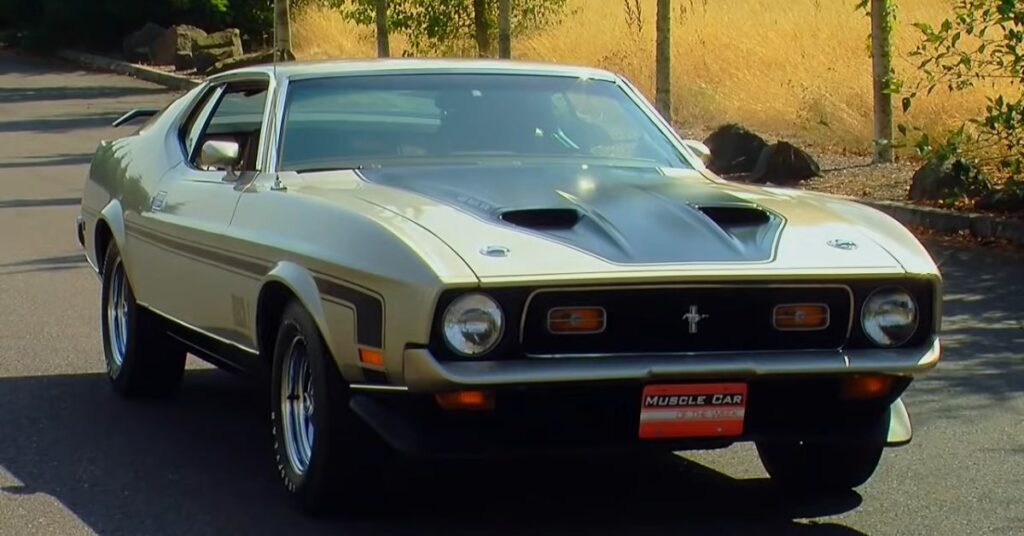
One theory behind the larger size of the 1971 Mustang was that the original buyers, who were young and single when they purchased their first Mustangs in 1964 and 1965, were now a few years older, married, and starting families. Ford believed that these customers needed a larger Mustang with more space to accommodate their growing families. Thus, the 1971 Mustang was designed to appeal to both loyal Mustang enthusiasts and new buyers looking for a sporty car with added practicality.
The Unique Styling of the 1971 Mustang Mach 1
The 1971 Mustang underwent a significant transformation in terms of its exterior design. It was an all-new design that deviated from the classic Mustang look, causing some controversy among Mustang fans. The hood became longer, the roofline changed, and the rear window adopted a flatter shape.

Ford marketed the new design as a sporty personal car with European flair. However, opinions on the updated styling varied, with people either loving or hating the new look.
Aerodynamic Enhancements for Performance
One of the interesting aspects of the 1971 Mustang Mach 1’s design was its aerodynamic features. Ford incorporated several tricks to improve aerodynamic efficiency. They made the door handles flush, hid the windshield wipers below the hood, and designed the front bumper to resemble a spoiler. These enhancements, along with other aggressive styling elements like the full-length black stripe and the blacked-out rear wing and taillight panel, gave the Mach 1 a distinct and captivating appearance.
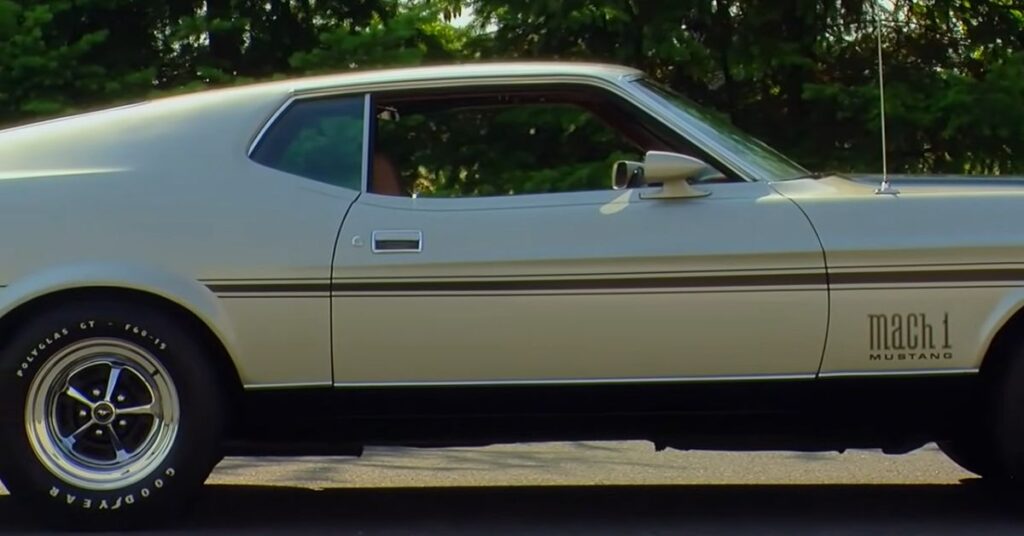
The 1971 Mustang Mach 1’s bold design caused mixed reactions among car enthusiasts. Some appreciated the larger size and the fresh approach to the Mustang’s styling, while others felt that it deviated too far from the classic Mustang heritage. Despite the differing opinions, the 1971 Mustang Mach 1 undeniably made a lasting impression and has become an iconic representation of its era.

Striking Exterior Features
The exterior of the 1971 Mustang Mach 1 boasted several distinctive design elements that distinguished it from other muscle cars during its time. One notable feature was its sloping rear fastback design, which added a sense of sleekness and athleticism to the car’s overall profile. This design choice not only contributed to its aesthetic appeal but also improved the vehicle’s aerodynamics, allowing for better performance on the road.
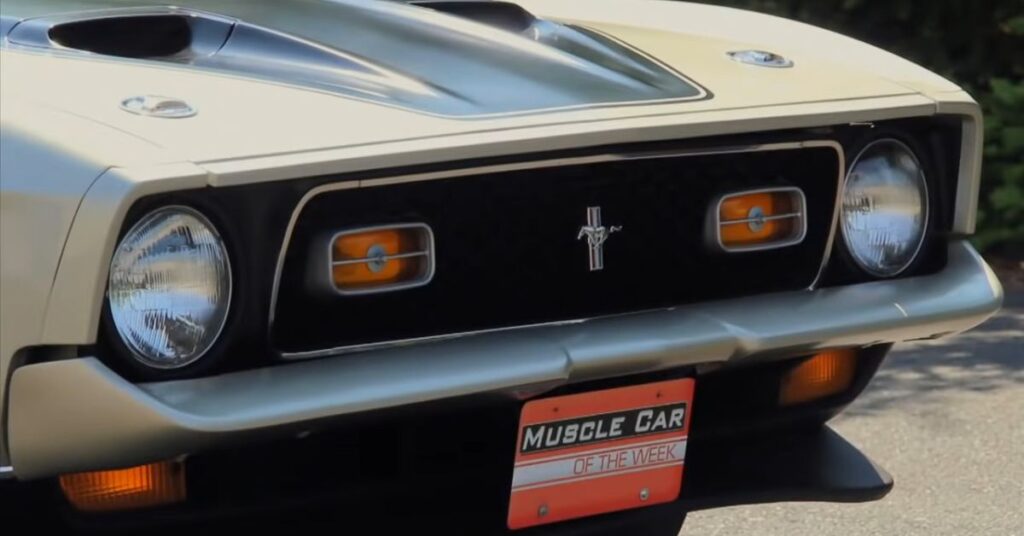
Another eye-catching aspect of the Mach 1’s exterior was its aerodynamic front bumper. The design of the bumper helped to reduce drag and improve airflow around the car, enhancing its overall performance. Moreover, the aerodynamic front bumper complemented the sleek lines of the vehicle, giving it a more aggressive and powerful appearance that was synonymous with the muscle car era.
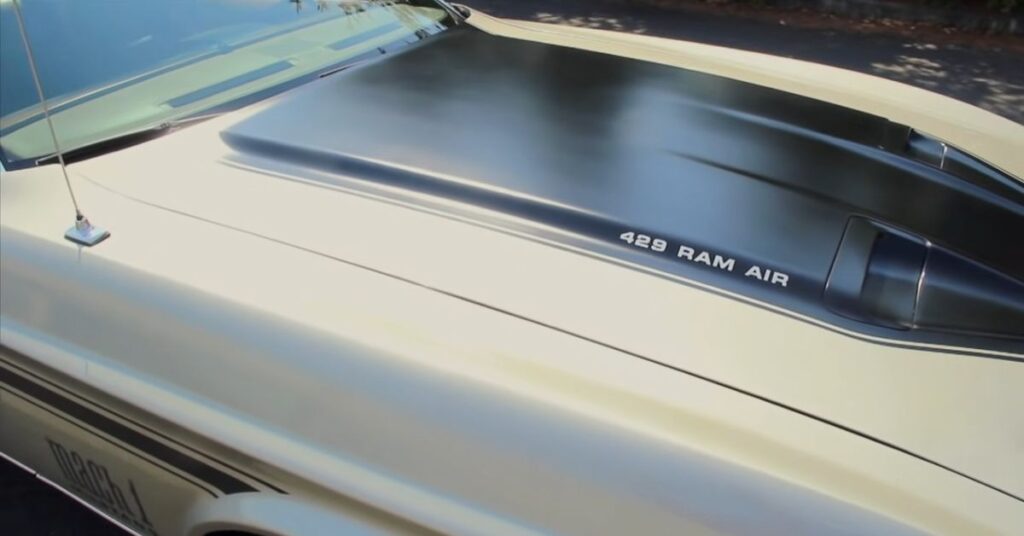
To further accentuate its bold and commanding presence, the 1971 Mustang Mach 1 featured a striking black stripe running down the side of the car. This visual element not only added a touch of contrast to the body but also emphasized the car’s elongated and muscular shape. The black stripe became a signature design cue for the Mach 1 and instantly made it recognizable on the road.
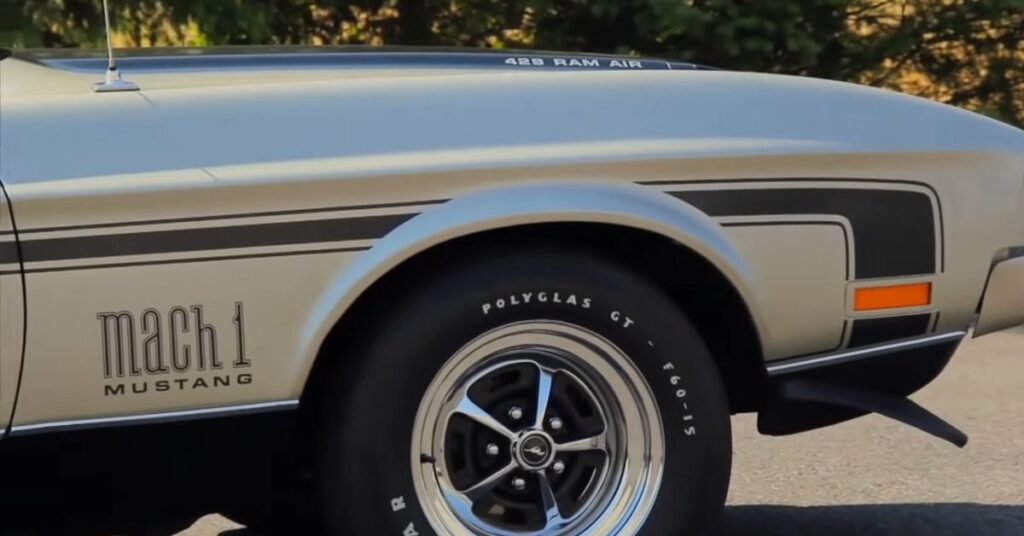
In addition to the black stripe, the Mach 1 was adorned with a blacked-out rear wing and taillight panel. This design choice not only added a touch of sophistication but also enhanced the car’s overall aggressive and sporty appeal. The blacked-out rear wing provided not only an aesthetic element but also improved the vehicle’s stability and downforce at higher speeds, making it a practical addition for performance-minded drivers.
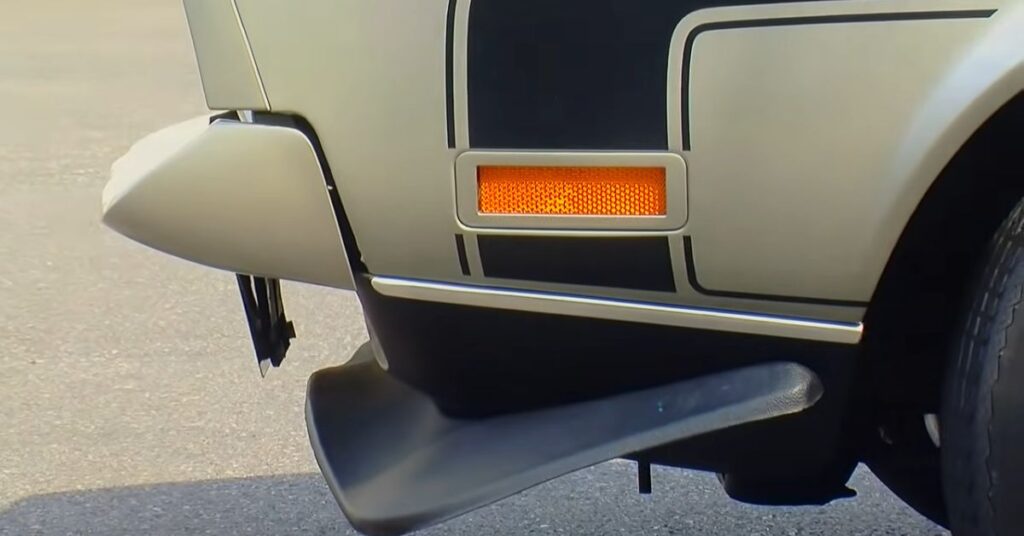
One final element that contributed to the visual impact of the 1971 Mustang Mach 1 was its unique pewter color. This distinct color choice, with its metallic undertones, further accentuated the car’s muscular and timeless design. It added a touch of elegance to the overall appearance, making the Mach 1 stand out even more on the streets. The pewter color was a bold and unconventional choice that perfectly complemented the car’s aggressive styling and made it a true icon of its time.
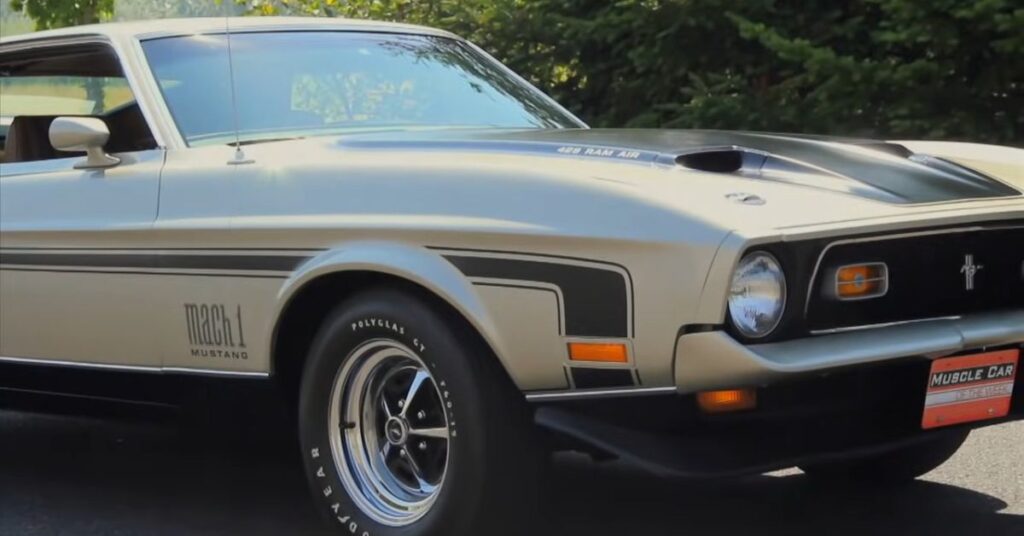
In summary, the exterior design of the 1971 Mustang Mach 1 incorporated several distinctive elements that set it apart from other muscle cars of its era. The sloping rear fastback design, aerodynamic front bumper, black stripe, blacked-out rear wing and taillight panel, and unique pewter color all contributed to the car’s aggressive and visually striking appearance. These design choices not only enhanced the car’s aesthetic appeal but also improved its performance and made it an iconic symbol of the muscle car era.
The Powerhouse: 429 Ram Air V8 Engine
Under the hood of the 1971 Mustang Mach 1 resided the impressive 429 Ram Air V8 engine. This power plant delivered exceptional performance and raw power. However, it is interesting to note that the 429 Cobra Jet’s smaller sibling, the Boss 351, was reputed to be faster due to its lighter weight and improved tire technology of the time. Nonetheless, with its 11.3:1 compression ratio and the ram air induction system, the 429 produced an impressive 375 horsepower and 450 foot-pounds of torque.
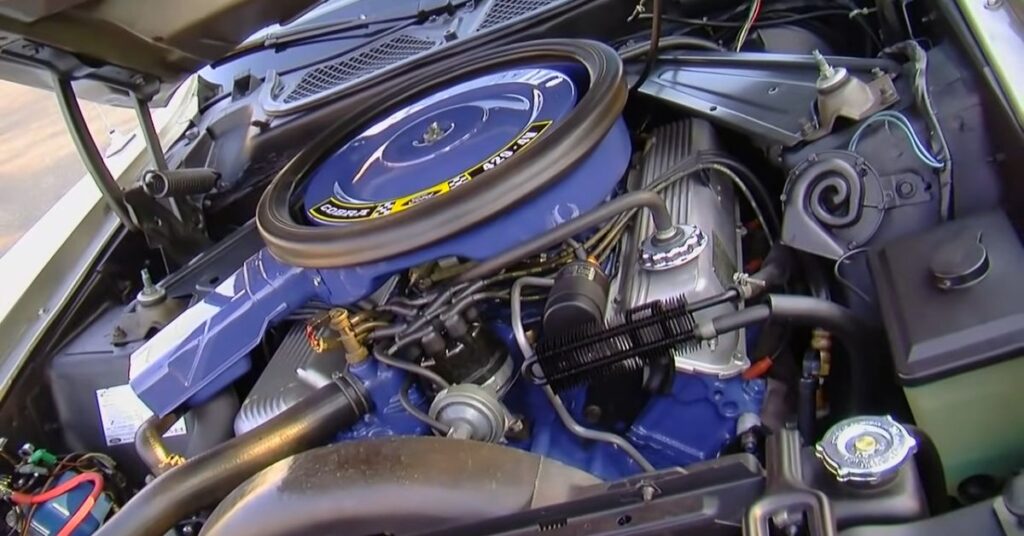
Although the Boss 351 was considered faster than the 429 Cobra Jet in certain circumstances, it is essential to acknowledge that the 429 had the potential to outperform its smaller counterpart. Motor Trend magazine recorded a quarter-mile time of 13.8 seconds for a Boss 351, indicating its impressive speed. Given the right tuning and tire selection, the 429 Cobra Jet would likely leave the Boss 351 in its rearview mirror. The 429’s unique combination of power, torque, and drivability made it a popular choice among muscle car enthusiasts.

The 429 engine boasted a hydraulic cam, which contributed to its smooth operation on the street. Equipped with a Holley carburetor, free-flowing exhaust, and additional coolers for improved performance, the Cobra Jet cars offered an exhilarating driving experience. The 429-powered Mach 1 models, especially those with the drag pack option, exemplified Ford’s commitment to creating a muscle car that delivered both power and traction on the road.
Limited Production Numbers
The 1971 Ford Mustang Mach 1 429 was a rare gem, with limited production numbers. Only 550 true J-code 429 Super Cobra Jets were manufactured, and out of those, a mere 167 were Mach 1 models with an automatic transmission. The scarcity of these cars further adds to their desirability and collectability among enthusiasts.

Handling and Stance: Better than Ever
Ford’s marketing efforts emphasized that the increased overall size and wider stance of the 1971 Mustang equated to enhanced handling characteristics. Although opinions on this claim varied, it is undeniable that the larger dimensions and revised suspension setup contributed to a more substantial and planted feel on the road. The Mach 1’s handling capabilities, combined with its bold styling, made it an attractive choice for those seeking a powerful and capable muscle car.

The Mach 1 Styling Inside the Car
The interior styling of the Mach 1 perfectly complemented its powerful and aggressive exterior design. Stepping inside the car, one would be greeted with a sporty and driver-focused cabin that exuded a sense of performance and luxury.
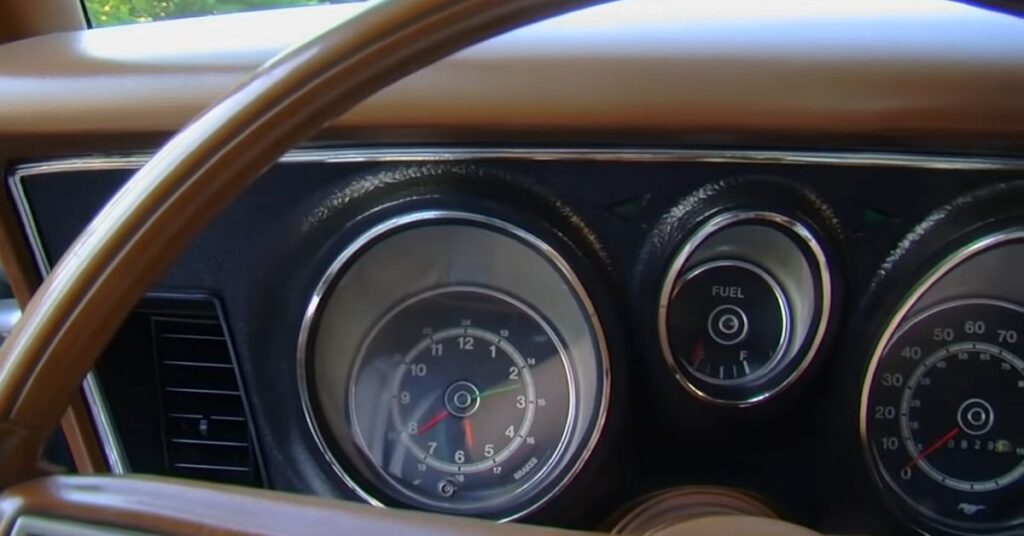
The first thing that caught the eye was the iconic Mach 1 instrument panel. Designed with a combination of brushed aluminum and black accents, the instrument cluster featured clear and easy-to-read gauges that provided essential information to the driver. This stylish and functional design element added to the overall sporty feel of the interior and enhanced the driving experience.
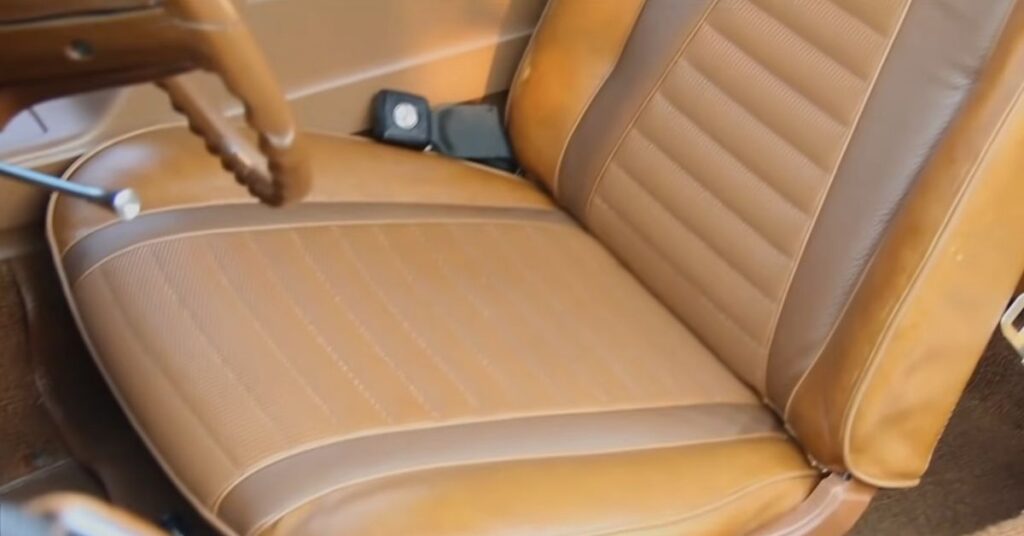
To further enhance the sporty atmosphere, the Mach 1 was equipped with well-bolstered and supportive bucket seats. These seats not only provided excellent comfort during long drives but also offered ample lateral support to keep the driver and passengers secure during spirited driving. The seats were often finished in high-quality upholstery, such as leather or premium cloth, which added a touch of luxury to the interior.
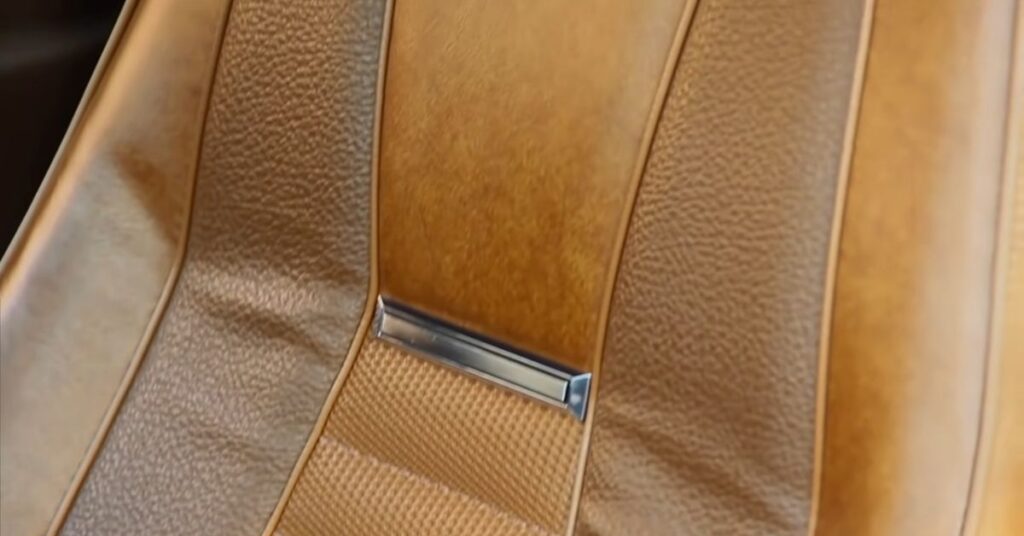
Another notable feature inside the Mach 1 was the center console. Designed with both functionality and style in mind, the center console housed various controls and switches within easy reach of the driver. It also often featured a stylish shifter for the manual or automatic transmission, adding to the engaging driving experience. The console might also have included additional storage compartments and cup holders to enhance convenience and practicality.

Lastly, the Mach 1 boasted a range of interior details and finishes that added a touch of sophistication. High-quality materials, such as brushed aluminum, chrome accents, and premium trims, were used throughout the cabin to create a sense of luxury and refinement. The attention to detail in the interior design reflected the overall craftsmanship and commitment to excellence that defined the Mach 1.
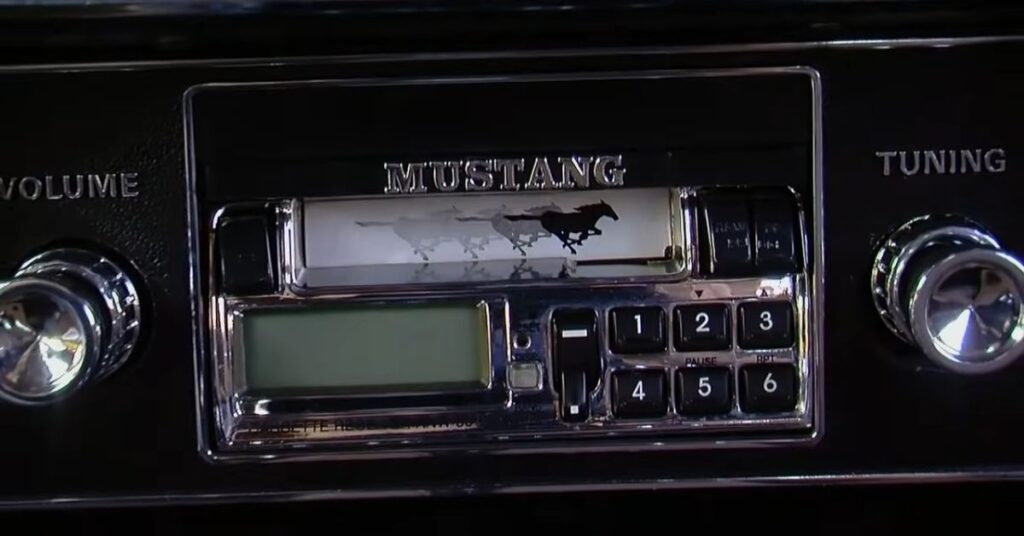
In conclusion, the interior styling of the Mach 1 perfectly matched its powerful exterior design. From the iconic instrument panel to the supportive seats and stylish center console, every aspect of the interior was crafted to create a sporty and luxurious driving environment. The high-quality materials and attention to detail further added to the overall appeal and made the Mach 1 a truly desirable and iconic muscle car.
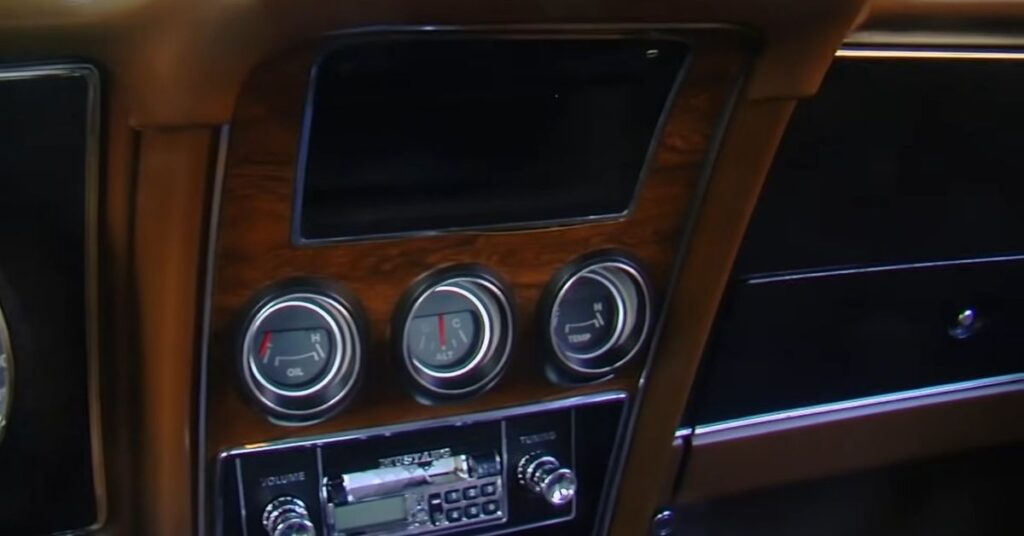
The redesign of the 1971 Mustang Mach 1 generated considerable controversy and debate among car enthusiasts. Some praised Ford’s bold approach to reinventing the Mustang, while others felt that the changes deviated too far from the classic Mustang aesthetic. The 1971 Mustang Mach 1 remains a polarizing model among Mustang fans, but its place in automotive history as a unique and iconic muscle car cannot be denied.
Conclusion
The 1971 Ford Mustang Mach 1 429 stands as a testament to Ford’s determination to revitalize the Mustang brand and recapture the hearts of enthusiasts. With its larger size, unique styling, and powerful 429 Ram Air V8 engine, the 1971 Mustang Mach 1 made a statement on the road. While opinions may differ on its design choices, there is no denying the impact and legacy of this legendary muscle car.
